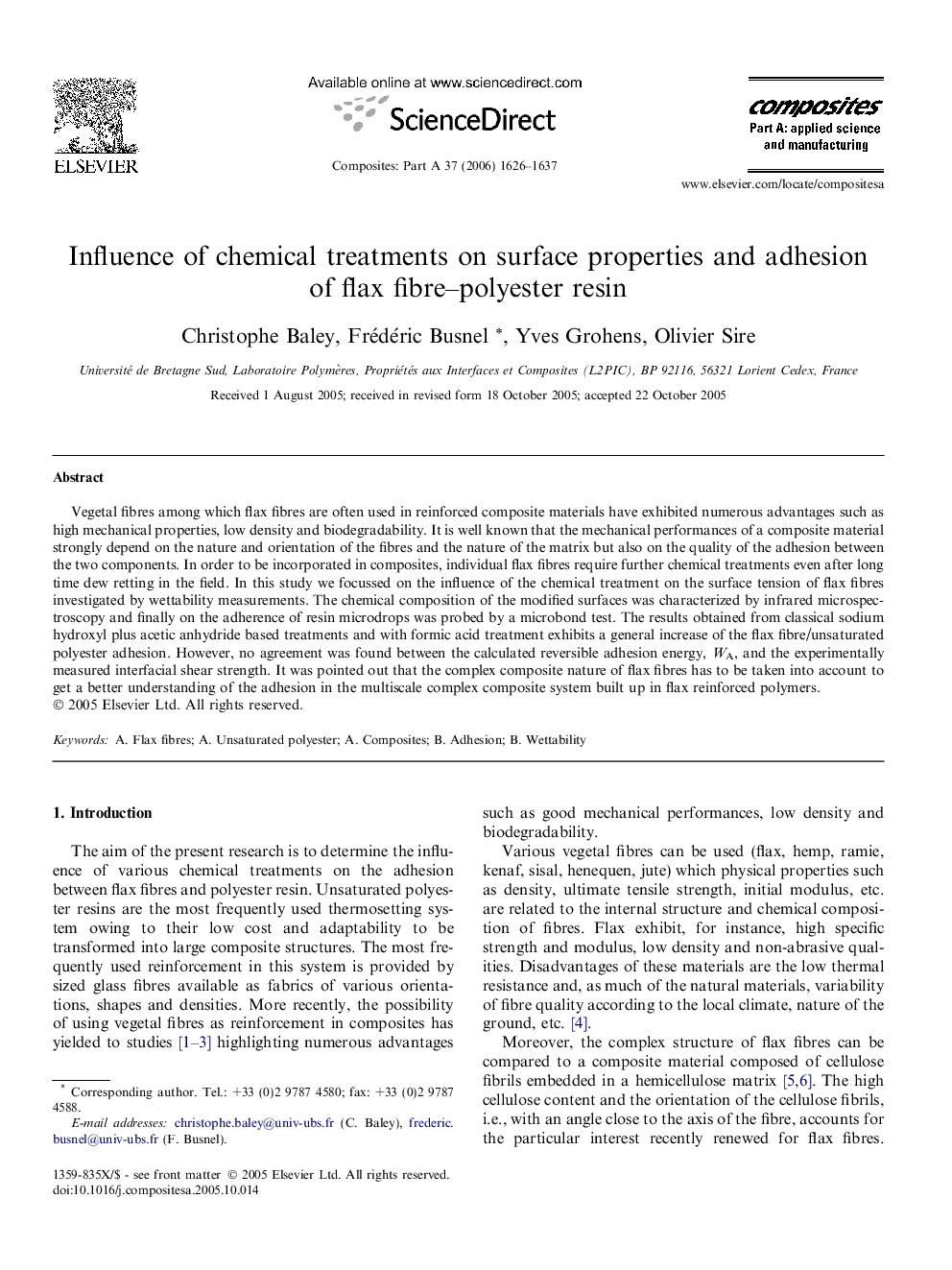| Article ID | Journal | Published Year | Pages | File Type |
|---|---|---|---|---|
| 1468210 | Composites Part A: Applied Science and Manufacturing | 2006 | 12 Pages |
Vegetal fibres among which flax fibres are often used in reinforced composite materials have exhibited numerous advantages such as high mechanical properties, low density and biodegradability. It is well known that the mechanical performances of a composite material strongly depend on the nature and orientation of the fibres and the nature of the matrix but also on the quality of the adhesion between the two components. In order to be incorporated in composites, individual flax fibres require further chemical treatments even after long time dew retting in the field. In this study we focussed on the influence of the chemical treatment on the surface tension of flax fibres investigated by wettability measurements. The chemical composition of the modified surfaces was characterized by infrared microspectroscopy and finally on the adherence of resin microdrops was probed by a microbond test. The results obtained from classical sodium hydroxyl plus acetic anhydride based treatments and with formic acid treatment exhibits a general increase of the flax fibre/unsaturated polyester adhesion. However, no agreement was found between the calculated reversible adhesion energy, WA, and the experimentally measured interfacial shear strength. It was pointed out that the complex composite nature of flax fibres has to be taken into account to get a better understanding of the adhesion in the multiscale complex composite system built up in flax reinforced polymers.
